Silk Screen Gala-6 Scintillates Again
by Sandhya Krishnan       e-mail:  sandhyakrishnan@gmail.com.
Sandhya Krishnan works at the corporate office of the famous local grocery chain, often moonlighting as the founder-director of Blue Mango – a multi-ethnic theatre group based in Pittsburgh. Having done two plays in the last two years, she is currently working on the third. Sandhya is an alumnus of BITS Pilani and XLRI Jamshedpur and lives with her husband in the beautiful Squirrel Hill neighborhood. Â
 Getting a diverse, colorful and well-connected crowd together is no easy feat and Executive Director Harish Saluja seems to pull it off effortlessly every single time. On May 6 2011, The Silk Screen Festival team hosted their Annual gala at the Omni William Penn hotel and an estimated 300 patrons showed up in their ethnic best.
Getting a diverse, colorful and well-connected crowd together is no easy feat and Executive Director Harish Saluja seems to pull it off effortlessly every single time. On May 6 2011, The Silk Screen Festival team hosted their Annual gala at the Omni William Penn hotel and an estimated 300 patrons showed up in their ethnic best.
Drawing attention were Kathy and Sean Engel, attired in Indian traditional wear. Sean was seen sporting a bridegroom look from Udaipur, complete with a glittering turban, while Kathy paired her turquoise Jaipur saree with jewelry from Delhi. “We love Asian culture†said Kathy, adding that they plan to celebrate their anniversary by catching some of the movies at the festival.
The selection of food was diverse too, from Indian fare from Taj Mahal and Mediterranean from Alladin’s to Thai from my favorite place, Thai Cuisine. Several lovely pieces of origami made up the décor while a length of the room was lined with auction items. Inspired, I followed the kimono route to meet Kumiko Lancet and her team. Every year they are a part of the festival and this time they were the prelude to the main event. Their band of singers and musicians entertained the crowd with traditional Japanese songs from 7.30-8.00 pm.
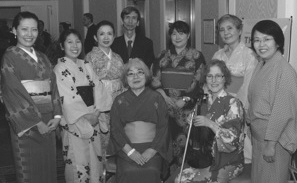 The entertainment was interesting and new, though from what I heard some pieces made a repeat appearance. As excited I was to see the myriad performances, I thought the artistes deserved more attention, either by the layout of the room or by having the audience seated.
The entertainment was interesting and new, though from what I heard some pieces made a repeat appearance. As excited I was to see the myriad performances, I thought the artistes deserved more attention, either by the layout of the room or by having the audience seated.
I love that Silk Screen is a part of our art scenario in Pittsburgh. The movies are always exciting, the marketing is great and the festival is one the city looks forward to every spring. And the gala, besides being a well-attended gorgeous evening, stood testimony to the fact that success comes in all colors!
Editor’s note: Nominated by Katie Jones of Silk Screen, Harish Saluja was chosen by UPMC Center for Inclusion as the Dignity and Respect Champion for May 2011 for fostering understanding across lines of race, ethnicity, religion, age, and region through Silk Screen. n
When the Quake Hit Japan: A Nuclear Engineer’s First-Person Observations
By Urmimala Shome   e-mail: sango83@gmail.com
 Editor’s Note: Born in Kolkata, India, Urmimala Shome came to Pittsburgh, PA, when her parents moved to Pittsburgh, over 25 years ago. She was five years old. She grew up in Pittsburgh earned her mechanical engineering degree from Carnegie Mellon, and is working in the commercial nuclear power industry since June 2005. After working as an Accident Analyst at Westinghouse Electric for five years she moved to Mitsubishi Heavy Industries (MHI) last year as a Severe Accident Analyst. She was in Japan on work when the quake hit. She lives in Arlington, VA.
Editor’s Note: Born in Kolkata, India, Urmimala Shome came to Pittsburgh, PA, when her parents moved to Pittsburgh, over 25 years ago. She was five years old. She grew up in Pittsburgh earned her mechanical engineering degree from Carnegie Mellon, and is working in the commercial nuclear power industry since June 2005. After working as an Accident Analyst at Westinghouse Electric for five years she moved to Mitsubishi Heavy Industries (MHI) last year as a Severe Accident Analyst. She was in Japan on work when the quake hit. She lives in Arlington, VA.
I was at work when the quake hit. I was jotting down some mundane project schedule reminder when, all of a sudden I started to feel dizzy and nauseous. Then I noticed the window blinds swaying back and forth like a pendulum. “Ah, my first Japan earthquake,†I thought. My first international quake really, as I had lived through several smaller ones during my short stay in California. Several minutes passed. I began to realize that the rocking motion (like ones on a boat in choppy weather) had not subsided or reduced in intensity. Most of my Japanese teammates were congregating at the windows and peering out at the ocean. At the time of the quake, I was working out of Kobe, a port city on the Pacific Coast, located in southwestern Japan. Mitsubishi’s Energy & Transportation Division is located at the MHI Shipping yard, right next to the ocean.
 About five whole minutes passed since I first noticed the first sign of a quake. During those minutes, I had been giving a play-by-play of the situation to friends back in California via g-chat. I immediately went on the USGS.org site, reading about the time, location, and magnitude of the quake. Preliminary readings put it at 7.9 on the U.S. Richter scale, the epicenter approximately 900 km (~560 miles) northeast of Kobe. The final reading placed it at a 9.0.
About five whole minutes passed since I first noticed the first sign of a quake. During those minutes, I had been giving a play-by-play of the situation to friends back in California via g-chat. I immediately went on the USGS.org site, reading about the time, location, and magnitude of the quake. Preliminary readings put it at 7.9 on the U.S. Richter scale, the epicenter approximately 900 km (~560 miles) northeast of Kobe. The final reading placed it at a 9.0.
Japanese zoning and construction laws are strict about building on earthquake-prone  sites. Modern buildings are designed to sway during a quake, and absorb the kinetic energy of the moving ground. Your sways and the displacements you experience depends on how far you are above the ground, on what floor you are on – the higher you are, the more sway you will feel. My group is located on the eighth floor of a 12-story building, so we definitely felt our building rock back and forth.
sites. Modern buildings are designed to sway during a quake, and absorb the kinetic energy of the moving ground. Your sways and the displacements you experience depends on how far you are above the ground, on what floor you are on – the higher you are, the more sway you will feel. My group is located on the eighth floor of a 12-story building, so we definitely felt our building rock back and forth.
 Soon after the initial quake stopped, the aftershocks started; two were almost as severe lasting almost as long as the initial tremor. Since the epicenter was out in the sea, Kobe was at risk of being hit by a tsunami. About ten minutes after the end of the second aftershock, we were told to evacuate in response to a tsunami warning. But Kobe was spared  any tsunami effects.
Soon after the initial quake stopped, the aftershocks started; two were almost as severe lasting almost as long as the initial tremor. Since the epicenter was out in the sea, Kobe was at risk of being hit by a tsunami. About ten minutes after the end of the second aftershock, we were told to evacuate in response to a tsunami warning. But Kobe was spared  any tsunami effects.
For a entire week after March 11th, I was on the phone, e-mailing, and Skyping with family and friends trying to reassure them of my safety. I initially did not plan to return to the U.S., but decided to do visit my family who were understandably worried sick.Â
Throughout this week, news coverage of the Fukushima Daiichi nuclear plant situation was in full swing. Working in the commercial nuclear power industry for the past six years, of course, gave me better understanding into the technical aspects of the accident in the four reactors. It was interesting for me to see how the situation was explained to the public.
There was a definite contrast between Japanese and American reporting. Watching CNN that first night, I was rather disappointed with the lack of accurate reporting in the U.S. I soon turned CNN off and started reading Al Jazeera, BBC, World Nuclear News, and the NRC sites online. I soon instructed my family and friends to follow suit.Â
American news programs sensationalized about 90% of their coverage of Fukushima. Instead of trying to explain basic principles of how nuclear energy is generated or even the layout of the inside of these types of reactors, reporters felt the need to politicize the future of nuclear power in general by comparing the accident to Chernobyl and Three Mile Island. They were falsely claiming that Fukushima was “another Chernobyl,†which is not only inaccurate, but also unethical because that comparison propagated rampant misinformation. Instead of calm, collected, and objective journalism, the American public was misinformed with anti-nuclear energy rhetoric and propaganda. The Japanese reporting was more objective. Specifically, the NHK news anchors kept table-top models of the inside of the Fukushima reactor to help explain the phenomenon inside the plant. They interviewed the electric utility company officials who owned the reactor as well as the civilians impacted by the evacuation. In the first weeks after the quake, NHK reporters focused on trying to be as informative as possible, without commenting on the politics of Japan’s nuclear power.Â
Outside of the news coverage, I was rather impressed by the level of calm and preparedness shown by the Japanese people. Their response was one of seasoned veterans facing yet another natural disaster. Of course, this quake was singularly worse because the huge quake was coupled with tsunami, which destroyed a nuclear plant, leading to radiation exposure.Â
Had something of this magnitude happened anywhere else in the world, especially in the U.S., it is entirely possible that we would have had much more mass panic and disorder. The aftermath of Hurricane Katrina provides a good example. The widespread looting during Katrina was starkly different from the dignified and respectful way that the Japanese people treated one another. There seemed to be a real sense of community and camaraderie from the very start in the wake of the great calamity.
As a result of this level of cooperation, the impacted region of Japan is now steadily recovering. However, the question remains, what is the fate of nuclear power in Japan and rest of the world? There are many lessons to be learned from Fukushima. The worldwide nuclear community must be given the opportunity to apply those lessons learned to new plan construction.
It is clear that the much-lauded “nuclear renaissance†can no longer go full-steam ahead. Already, all of the world’s nuclear reactors are being inspected again, and have been either modified or shut down as a result.
There is no doubt that the accidents at Fukushima have shaken people’s confidence in nuclear power. Going forward, it is the responsibility of the nuclear industry to convince the public that nuclear power is safe, and still has a future in our world. So we are taking it one day at a time. n
Obituary: James White – May 1941 to April 2011
Curator of Botanical Library at CMU and an Avid Lover of Indian Music and Visual Arts
 James White, the very soft-spoken curator of Botanical Documentation at Carnegie Mellon University’s Hunt Library, and a great lover of Indian performing and visual arts, died on April 12, 2011 in the wake of an accelerating degenerative neurological disease. He was 69.
James White, the very soft-spoken curator of Botanical Documentation at Carnegie Mellon University’s Hunt Library, and a great lover of Indian performing and visual arts, died on April 12, 2011 in the wake of an accelerating degenerative neurological disease. He was 69.
White, born and raised in Johnson City, Tennessee, earned his bachelor’s degree from East Tennessee State University. Later he went to Washington, D.C., where he took botany classes at George Washington University and art classes at the Corcoran Museum of Art. Then he joined the Smithsonian Institution in their botanical section.
In 1978 he moved to Hunt Institute’s botanical collections as the curator. In 1996 on a Fulbright fellowship, he went to India to catalog the colonial era botanical art. He returned to India two more times, and developed contacts with Indian painters working on India’s flora and fauna. As a person keenly interested in visual arts, India, warts and all, fascinated him. He became an Indophile. After reading the Sikh history, he became a practicing Sikh. He had a personal collection of arts and artifacts from many places, including several exquisite bronzes from India. His friend helped in auctioning them off to pay for his nursing home care.
He brought several Indian artists — Mahaveer Swamy from Rajasthan in 1994; Arundhati Vartak from Maharashtra in 2000; and Damodarlal Gurjar in 2001 — giving first exposure to their works in the US. As a testimony to his judgment to bring them here, most of their works were sold out.
Many readers would remember seeing White sitting very quietly in Indian music concerts in Oakland and in the S.V.Temple auditorium. He also helped in establishing the Pittsburgh branch of SPIC-MACAY (Society for the Promotion of Classical Music and Culture Amongst Youth).
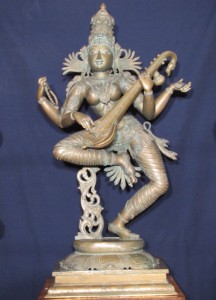 On more than one occasion White shared with friends his frustrations in dealing with museum administrators in India. In a Bangalore museum he saw a large collection of paintings in rolls in a musty basement. When he broached organizing an exhibition of the paintings (paying from his resources for insurance, shipping, framing them for display), the museum director asked him for a business class ticket for him and his wife.
On more than one occasion White shared with friends his frustrations in dealing with museum administrators in India. In a Bangalore museum he saw a large collection of paintings in rolls in a musty basement. When he broached organizing an exhibition of the paintings (paying from his resources for insurance, shipping, framing them for display), the museum director asked him for a business class ticket for him and his wife.
The Hunt Library organized a memorial service to James White on May 20 at CMU. In White’s death, the Indian Diaspora in Pittsburgh lost a good friend.                                    —Â
Photo by Deepak Kotwal : The 48″ high Saraswati in Chola- style bronze from the private collection of Mr. Jim White, an Indophile. White passed away in April.
By Premlata Venkataraman.
Sri Sathya Sai Baba: Godman with difference.
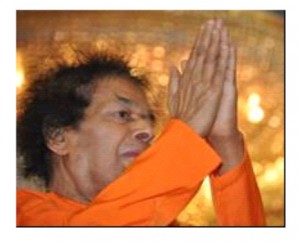 Sri Sathya Sai Baba was a unique spiritual figure of our times, whose teachings transcended linguistic, social, national, and even religious barriers. His message was simple and universal: “Love all, serve all.† He said,†I have not come on behalf of any exclusive religion. I have not come seeking publicity for a sect, creed, or cause; nor have I come to collect followers for a doctrine. I have come to establish Sanathana Dharma (the Eternal Order).†Â
Sri Sathya Sai Baba was a unique spiritual figure of our times, whose teachings transcended linguistic, social, national, and even religious barriers. His message was simple and universal: “Love all, serve all.† He said,†I have not come on behalf of any exclusive religion. I have not come seeking publicity for a sect, creed, or cause; nor have I come to collect followers for a doctrine. I have come to establish Sanathana Dharma (the Eternal Order).†Â
 People of all faith came to him. One did not have to abandon his or her religion to be his follower. He said, “Let the different faiths exist, let them flourish, and let the glory of God be sung in all the languages and in a variety of tunes.† One did not even have to be believer to acknowledge the phenomenon he has been.
What attracted me personally most was his legacy of service. Miracles were second nature to him. His mission was to serve the “poorest of the poor†all across the globe, from the tiny hamlet of Puttaparthi to the remote corners of the world. He established state-of-the-art super specialty hospitals, general hospitals, clinics — even mobile hospitals for those who could not come to the hospitals.
The hospitals provide basic and advance healthcare free of charge to all. Patients received both “Dava and Duaâ€as Prime Minister Vajpayee, his devotee, said inaugurating his Banglore Hospital.
He always said, â€Serving hands are holier than praying lips.â€Â Such was the quality of in his mission hospitals that they model many governments and NGOs wonder how he makes it work. Even WHO sent a special team to study the workings of his hospitals and model the team was pleasantly surprised on how effectively managed they were.
Sai Baba also started an education system “EHV†Education in Human Values, which include Sathya, Dharma, Shanti, Prema and Amhinsa, (or Truth, Fairness, Peace, Compassion, and Nonviolence) which was readily adopted in many school curricula including in schools in Muslims countries like UAE.
One of his famous sayings was: “If there is righteousness in the heart, there will be beauty in the character. If there is a beauty in the character, there will be harmony in home. When there is a harmony in home, there will be order in the nation. When there is an order in the nation, there will be peace in the world.†When India’s ex-President Abdul Kalaam, another devout follower, quoted this passage while addressing the European Parliament, there was an unprecedented thundering ovation after this quote.
No amount of words or space can describe his true glory. Of course, detractors are always there against any divine being in any age. Some even question his timing of leaving his body. Actually, he left his body at the precise age of 96 according to Vedic Lunar calendar not Gregorian calendar.
That he was the source of inspiration to the building of so many hospitals and educational institutions, and making them accessible to the really poor was perhaps the most tangible of all the miracles.
 I believe he is what he said he was — a divine being in human form.
East Meets West
By Mandira Chattopadhyay   Â
e-mail: mchattopadhy@bsu.edu
Many years ago, Kipling remarked, “Oh, East is East, and West is West, and never the twain shall meet.”
Priyanka visited the wedding ceremonies as an outsider, to collect data for her anthropological research. She reckoned that as an invited guest for the wedding, she could use this as an opportunity to perform an ethnographic study of this event and the people around it. The son of a well-to-do Bengali immigrant, the groom was born in Calcutta but brought up mostly in southern New Jersey, chose a Midwestern all American girl who came to study at a nearby college and then became a school teacher. The groom, after graduating from a local college, picked the prestigious location of Princeton, New Jersey to build up his business.
The wedding definitely embraced a bourgeois lifestyle as the couple appeared in an unmistakably Western manner in a Princeton Chapel. The groom gazed with reverence and admiration at the bride, who with her blonde hair and blue eyes returned her glance to him on a beautiful sunny April morning. As the bride walked down the aisle in her father’s arms, the groom appeared in his diamond-buttoned tuxedo. It was definitely a sight to see how the new generation of Indians was melding into the American way of life.Â
 Some of the Indian women started to make catcalls, known as Uludhwani to mark the religious occasion, while some others began to blow soap bubbles. The priest performed the wedding rites by first starting a small fire from the wedding kit he brought. He then explained the series of events that followed as he chanted the Hindu religious verses in Sanskrit.Â
Priyanka remembered her own wedding in Princeton, N.J., a number of years ago where she had met her beau, an Indian graduate student at Princeton University. She had come from India just three months ago to visit her sister who lived near Princeton. The priests were not easy to find then, the only one available was hurriedly brought from the Indian Consulate in New York City. A traditional Indian wedding took place in her sister’s residence – a blazing fire was set up in the backyard with the flames rising up in the sky.  Wedding vows were taken with the fire representing the almighty as the witness, and the bride and the groom went around the fire. Unfortunately the bride and the groom could not wear on Indian style wedding hats, because they were not available. Indian food was served in her sister’s backyard. The reception followed the next day at the Princeton University Graduate College, where everyone, Indians and Americans alike, dressed up in Indian clothes. It seemed that East still remained the East.Â
Priyanka imagined how in her own wedding she was bonded to the people that worked so hard for her wedding, a bond that remained with her even to this day.Â
Looking at this wedding, she concluded that Kipling was wrong after all. The East and the West have truly met, and what a mingling it was, at this gala and lavish wedding.
Universal Ideas in the 1800-years old Tamil Literature
By Kollengode S. Venkataraman
Many of you may know that Tamil devotional literature – over 10,000 verses composed by Saiva and Vaishnava poets between 4th and 10th centuries AD — was the trigger for the Bhakti poetry in all Indian languages in later centuries that forever enriched and defined the Indian psyche.
Even before the advent of the Bhakti poetry, anthologies of secular Tamil poems written between 1st and 4th centuries AD are in what is called the Sangam Literature. One well-known is Aga-Naanooru (literally, Internal-400) with sensual love as its motif. The second is Pura-Naanooru (or External 400) focusing on events outside the love life of people. The “400†is the approximate number of verses in the anthologies.
Pura-naanooru’s poems describe the valor, generosity, even tyranny, of kings. The poets advise kings against going to war, mediate fights between neighboring kings, criticize kings on the excesses of corrupt officials, admonish kings to be loyal to their wives and not philander, exhort people to be benevolent — the same themes we see in public life today. Many are also sycophantic, jingoistic, and describe poverty among people — traits that are common today as well.
However, one poem in Pura-Naanooru by Kaniyan Poonkunran, known to those familiar with Tamil classics, stands out. This poem is breathtakingly fresh and “modern†given that it is written over 1800 years ago. Here is Prema Venkataraman’s attempt to versify the poem from its literal translation:
Every hamlet is my village and all are my kin; Good and bad are caused not by others herein. Natural is the flow of angst, And the happy event next. Through all of which we know, Death is nothing new.  So happy events do not make us exultant; And difficulties neither make us despondent.  “The rain batters the hill with lightning and thunder; Rain drops become streams, and thence to a gushing river. As the river meanders, the canoes go with its flow. With the ebb and flow of life, like the canoes we go.† This we learned from the wise among us. So we neither gape with awe at those who are famous; Better still, nor we disdain those who are nameless. ÂKaniyan Poonkunran’s opening words resonate well in today’s globalized world. Better still, in a world given to adulation of wealth, success, power, and fame, his words towards the end make us think, guiding us on how we need to model our lives. Here is the original for those who can read Tamil: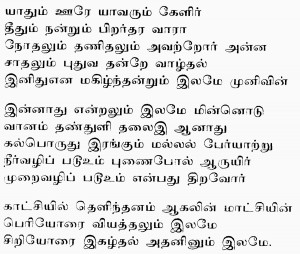
Ummm or is it “Ha”
What follows is my conversation with an operator in the plant several years ago — K S Venkataraman.
“Venkat, Where are you from?”
“How far back you want me to go?
“I mean, where are you originally from?
“India, Mike.”
“How far is it from here?”
“Oh, over 10,000 miles.”
“How long does it take to fly over there?”
New Gingrich in His Own Words:
Newt Gingrich, the Republican ex-House Speaker, wanting to become the US President, on CBS’s Face the Nation, May 22, 2011
GINGRICH: You know, we don’t do elaborate things.
BOB SCHIEFFER, the CBS moderator of Face the Nation: Did you owe half-million dollars to a jewelry company at one point?
Newt: We had a revolving fund.
Bob: Well, what does that mean?
Newt: It means that we had a revolving fund. It was a… …
Bob: I mean, who buys a half-million dollars worth of jewelry on credit?
Newt: No. It’s a… … go talk to Tiffany’s. It’s a standard, no-interest account.
Bob:: How long did you owe it?
Newt: I have no idea, but it was paid off automatically. We paid no interest on it. There was no problem with it. It’s a normal way of doing business.
Bob: Well, I mean, it’s very odd to me that someone would run up a half-million-dollar bill at a jewelry store.
Newt: Well, go talk to Tiffany’s. All I’m telling you is we are very frugal. We, in fact, live within our budget. We owe nothing.
Shining India Does not Shine for a Whole Lot
Posted by admin in April 2011 on April 12, 2011
I was in India for nearly six weeks early this year mostly in Coimbatore in Tamil Nadu, a second tier Indian city with a long history of natural enterprise built without too much support from either federal or state government. In and around Coimbatore, you need to drill deeper than 300’ to get water, and still, you see small-scale farming all around. That is how enterprising people there are.
The economic, social, and cultural impact of old-time established enterprising social groups — the Naidus, Gounders, and Chettiars, and others — is everywhere in Coimbatore. They prime the economy of the region. In addition, their well-known philanthropic institutions are scattered all over the city in primary and secondary education, and in all branches of higher education in the sciences, liberal arts, management, engineering & technology and healthcare. Gujaratis, Marwaris and Keralites in the last 30 to 40 years are recent entrants. But they are mostly only in trade abd business.
In the main shopping streets most of the signage for shops are only in the Roman script. Only rarely the boards are in Tamil. In the only small newspaper/bookstore at the small Coimbatore airport, not even one Tamil magazine or newspaper is on display. Only US publications or India’s English dailies/weeklies. What Macaulay and the British could not accomplish in their 150 years of Indian occupation, Indians themselves have done in sixty-four years since independence.
Multi-storey apartment complexes are fast replacing single-family houses in coimbatore and in many other second-tier towns. Four- to 6-storey apartment complexes with 16 to 24 apartments with up to 1500 sq. foot living area are fast replacing single-family homes. Nobody seems to worry about the bad societal and public health consequences on the population density going up 20 times with the same infrastructure intended for a much smaller population density.
The affluent live in expansive gated villas in luxurious lifestyles, including separate housemaids for cooking and cleaning. The villas look like haciendas in the Southwest. But when you step outside, the familiar Old India (which has become only worse) stares at you: Dusty roads with potholes; open sewers; maddening traffic with buses, trucks, vans, cars, motorbikes, scooters, and bikes all using the same lanes; with everybody blowing horns and nobody caring for traffic rules; water and air pollution; garbage piling up with plastics strewn all over the place… …
Another trend in places like Coimbatore, Mysore, Nashik is relatively affluent retirees from other places settling down in exclusive old-age communities. Their children live far away in India or overseas. This structural change in family arrangement has far-reaching social implications for India.
In Coimbatore bakeries are everywhere selling rich cakes and cookies in addition to halvas, jilebis, jangris, and a variety of deep-fried savories — all bad for your cardiovascular and endocrine systems. With a large section of the population having become sedentary and affluent, not surprisingly, in between the bakeries you see pharmacies and doctors’ offices specializing in heart diseases and diabetes.
People in India overwhelmingly seek English-medium private schools for their children. Some of the schools, such as the International Boarding Schools are for the really affluent, cost a fortune – several hundred thousand rupees per year. Even ordinary private high schools run into several tens of thousands of rupees per year. College education too is prohibitively expensive, in hundreds thousand rupees per year, way beyond the reach of the bottom half of the population.
Elective surgery is big business in Coimbatore. Some of the private hospitals for orthopedic and cardiac care are well known in many parts of India. For people with their own resources, these hospitals offer affordable care compared to what costs in Mumbai or Chennai. Patients come from all over India, and even from neighboring countries.
I went to a well-kept eyecare clinic where my mother had cataract done. The place was overflowing with hospital staff. Upon discharge, they send you home with flowers and fruits. The outpatient cataract removal for one eye costs around Rs. 30,000, a significant amount in the absence of medical insurance for working-class Indians earning in rupees and spending in rupees. This is way out of reach for nearly 75% of the population.
With no medical insurance for large sections of the population, which is unaffordable even when available, and no equivalent of Medicare for the elderly or Medicaid for the indegent, 100% of the hospital expense in private hospitals is out-of-pocket.
The unregulated private-sector-driven healthcare industry has retained the worst of India’s native healthcare practices and superimposed on it some of the worst US medical practices. While this serves the interests of the Indian healthcare industryy extremely well, this is the worst arrangement for patients needing care with limited resources like the working-class framilies earning in rupees and spenging in rupees.
It is common for physicians ordering tests – blood work, echocardiogram, and scans and others – to get commissions — they can be also called kickbacks –  up to 30% of what the labs charge the patients from the labs for ordering the tests. Specialists give commissions for GPs (general practitioners) for referring patients to them. And doctors get kickbacks from hospitals for admitting patients into their facilities.
 Not surprisingly, often the interactions between the patients and their doctors become testy when they order more tests or refer them to more specialists since 100% of the costs of the tests are borne by the patients. I personally know many families that called themselves “middle class†only a few years ago, now staring at bankruptcy on account of unmanageable healthcare cost in senior years.
The conditions in, and the resources of, the government hospitals are so bad that they are only meant for the abjectly poor.Â
We constantly read about India’s 9% and 10% growth rates in business magazines and anecdotal stories on India Shining: McDonalds and KFCs in urban centers, shopping malls coming all over, fashion shows with emaciated models swinging down the catwalks, auto dealership for BMW, Saabs and Porches, obscenely extravagent weddings, showrooms of upscale European fashion merchandise… …
But these stories gloss over serious underlying structural problems in the ever-widening socioeconomic inequities among people with and without access to resources, bad infrastructure, the poor quality in education and basic healthcare for the disadvantaged, and massive corruption at every level in government.
Tamil Nadu and Karnataka, the two states with phenomenal economic growth in the last 20 years, are also states where corruption is widespread and rampant.
The Indian elite is well aware of this even though it does not want to acknowledge this in public. It is no wonder that affluent and powerful Indians – and this includes many politicians – in large numbers have bank accounts valued at hundreds of billions of $s in Switzerland, London, Singapore, and Persian Gulf Sultanates.
And notwithstanding India Shining, even the most powerful and the upper crust sections of India still want to educate their kids in the West, even as they are proud of their fancy English medium schools, IIMs, IITs, their Med Schools, their IT prowess, and even as they assert in conversations that Indians are no more enamored of the West.
In earlier centuries, only the poor Indians in large numbers migrated out trying to eke out a living to countries such as Malaysia (to sweat it out in rubber plantation), the Caribbean and Suriname (as indentured workers in the sugarcane fields), to South Africa (as poor workers), to England to work as cab drivers and bus conductors, and recently to the Persian Gulf countries (as hardworking blue-collar workers working and living in subhuman conditions).Â
A relatively recent trend now in India is that sons and daughters of a large number of India’s ruling elite — powerful politicians, senior bureaucrats, military officers, high court judges, and others belonging to the upper economic classes — have migrated to Europe, North America, Singapore, Australia, New Zealand. India’s Prime Minister Manmohan Singh’s daughter, for example, works in US State Department as an attorney.
As news stories reported in The Hindu and the New York Times, sons and daughters of midlevel bureaucrats and military officers are given admissions with scholarships in US universities under circumstances that give room for a lot of suspicion.
One wonders how the decisions of India’s elected officials, senior bureaucrats and business managers will not be clouded by their filial affiliations, especially when they are widespread.
Notwithstanding the stories of Shining India in the Indian and global media, these trends suggest that at a visceral level, among India’s ruling elite there is a lurking suspicion, if not fear, that what the Shining India hides is not quite reassuring to their own long-term self-preservation in India.
Interfaith Dialog Needs to Go Beyond Tolerance
Posted by admin in April 2011 on April 12, 2011
By Rajiv Malhotra e-mail: rajivmalhotra2007@gmail.com
Rajiv Malhotra is an author and the founder of Infinity Foundation (www.infinityfoundation.com). He is also a former telecommuncation entrepreneur. After a career in the software, computer, and telecom industries Malhotra took an early retirement to pursue philanthropic and educational activities. In 1995 he founded the Infinity Foundation, an organization based in New Jersey promoting Indic studies. The foundation defines Indic traditions to include Buddhism, Sikhism, Jainism, Hinduism. The following article, first appeared in the Huffington Post last year, is printed here with the author’s permission.
It is fashionable in interfaith discussions to advocate “tolerance” for other faiths. But we would find it patronizing, even downright insulting, to be “tolerated” at someone’s dinner table. No spouse would appreciate being told that his or her presence at home was being “tolerated.” No self-respecting worker accepts mere tolerance from colleagues. We tolerate those we consider inferior. In religious circles, tolerance, at best, is what the pious extend toward people they regard as heathens, idol worshippers or infidels. It is time we did away with tolerance and replaced it with “mutual respect.”
Religious tolerance was advocated in Europe after centuries of wars between opposing denominations of Christianity, each claiming to be “the one true church” and persecuting followers of “false religions.” Tolerance was a political “deal” arranged between enemies to quell the violence (a kind of cease-fire) without yielding any ground. Since it was not based on genuine respect for difference, it inevitably broke down.
My campaign against mere tolerance started in the late 1990s when I was invited to speak at a major interfaith initiative at Claremont Graduate University. Leaders of major faiths had gathered to propose a proclamation of “religious tolerance.” I argued that the word “tolerance” should be replaced with “mutual respect” in the resolution. The following day, Professor Karen Jo Torjesen, the organizer and head of religious studies at Claremont, told me I had caused a “sensation.” Not everyone present could easily accept such a radical idea, she said, but added that she herself was in agreement. Clearly, I had hit a raw nerve.
I then decided to experiment with “mutual respect†as a replacement for the oft-touted “tolerance” in my forthcoming talks and lectures. I found that while most practitioners of dharma religions (Hinduism, Buddhism, Jainism and Sikhism) readily espouse mutual respect, there is considerable resistance from the Abrahamic faiths.
Soon afterwards, at the United Nation’s Millennium Religion Summit in 2000, the Hindu delegation led by Swami Dayananda Saraswati insisted that in the official draft the term “tolerance” be replaced with “utual respect.” Cardinal Joseph Ratzinger (now Pope Benedict), who led the Vatican delegation, strongly objected to this. After all, if religions deemed “heathen” were to be officially respected, there would be no justification for converting their adherents to Christianity.
The matter reached a critical stage and some serious fighting erupted. The Hindu side held firm that the time had come for the non-Abrahamic religions to be formally respected as equals at the table and not just tolerated by the Abrahamic religions. At the very last minute, the Vatican blinked and the final resolution did call for “mutual respect.” However, within a month, the Vatican issued a new policy stating that while “followers of other religions can receive divine grace, it is also certain that objectively speaking they are in a gravely deficient situation in comparison with those who, in the Church, have the fullness of the means of salvation.” Many liberal Christians condemned this policy, yet it remains the Vatican’s official position.
My experiments in proposing mutual respect have also involved liberal Muslims. Soon after Sept. 11, 2001, in a radio interview in Dallas, I explained why mutual respect among religions is better than tolerance. One caller, identified as a local Pakistani community leader, congratulated me and expressed complete agreement. For her benefit, I elaborated that in Hinduism we frequently worship images of the divine, may view the divine as feminine, and that we believe in reincarnation. I felt glad that she had agreed to respect all this, and I clarified that “mutual respect” merely means that I am respected for my faith, with no requirement for others to adopt or practice it. I wanted to make sure she knew what she had agreed to respect and wasn’t merely being politically correct. The woman hung up.
In 2007, I was invited to an event in Delhi where a visiting delegation from Emory University was promoting their newly formed Inter-Religious Council as a vehicle to achieve religious harmony. In attendance was Emory’s Dean of the Chapel and Religious Life, who happens to be an ordained Lutheran minister. I asked her if her work on the Inter-Religious Council was consistent and compatible with her preaching as a Lutheran minister, and she confidently replied that it was. I then asked: “Is it Lutheran doctrine merely to ‘tolerate’ other religions or also to respect them, and by respect I mean acknowledging them as legitimate religions and equally valid paths to God”? She replied that this was “an important question,” one that she had been “thinking about,” but that there are “no easy answers.”
It is disingenuous for any faith leader to preach one thing to her flock while representing something contradictory to naive outsiders. The idea of “mutual respect” poses a real challenge to Christianity, which insists that salvation is only possible by grace transmitted exclusively through Jesus. Indeed, Lutheran teaching stresses this exclusivity! These formal teachings of the church would make it impossible for the Dean to respect Hinduism, as opposed to tolerating it.
Unwilling to settle for ambiguity, I continued with my questions: “As a Lutheran minister, how do you perceive Hindu murtis (sacred images)? Are there not official injunctions in your teachings against such images?” “Do you consider Krishna and Shiva to be valid manifestations of God or are they among the ‘false gods'”?
How do you see the Hindu Goddess in light of the church’s claim that God is masculine?The Dean deftly evaded every one of these questions.
Haag explained that the Latin origin of “tolerance” refers to enduring and does not convey mutual affirmation or support: “[The term] also implicitly suggests an imbalance of power in the relationship, with one of the parties in the position of giving or withholding permission for the other to be.” The Latin word for respect, by contrast, “presupposes we are equally worthy of honor. There is no room for arrogance and exclusivity in mutual respect.”
Only a minority of Christians agree with the idea of mutual respect while fully understanding what it entails. One such person is Janet Haag, editor of Sacred Journey, a Princeton-based multi-faith journal. In 2008, when I asked her my favorite question “What is your policy on pluralism?” she gave the predictable response: “We tolerate other religions.” This prompted me to explain mutual respect in Hinduism wherein each individual has the freedom to select his own personal deity (ishta-devata, not to be confused with polytheism) and pursue a highly individualized spiritual path (sva-dharma). Rather than becoming defensive or evasive, she explored this theme in her editorial in the next issue:
““”In the course of our conversation about effective interfaith dialog, [Rajiv Malhotra] pointed out that we fall short in our efforts to promote true peace and understanding in this world when we settle for tolerance instead of making the paradigm shift to mutual respect. His remarks made me think a little more deeply about the distinctiveness between the words ‘tolerance” and ‘respect,’ and the values they represent.”
Obituary: J Badri Narayan — Metallurgical Engineer with a Distinguished Career
Posted by admin in April 2011 on April 12, 2011
by Sam Palusamy, Murrysville, PA.     e-mail: pshopp2700@yahoo.com
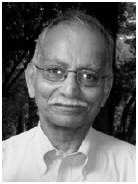 With great sadness, I record the sudden death of J Badri Narayan, my friend and a long-time resident in the Pittsburgh area, due to cardiac arrest. He died on Thursday, March 3, 2011 while working out on treadmill when he suddenly collapsed and fell down.
With great sadness, I record the sudden death of J Badri Narayan, my friend and a long-time resident in the Pittsburgh area, due to cardiac arrest. He died on Thursday, March 3, 2011 while working out on treadmill when he suddenly collapsed and fell down.
Born in Chennai, India, Badri was schooled in the Ramakrishna Mission School, and later earned his BS in physics in 1962 from the University of Madras through Loyola College, Chennai.
After briefly working in Bangalore, Badri came to Detroit to pursue his engineering education in Wayne State University where he received BS and MS degrees in metallurgy in 1969.
After working at Wolverine Tube, Inc., Dearborn, Michigan for two years, he joined Westinghouse Electric Company as Product Assurance Engineer in the Specialty Metals Plant (SMP), located in Blairsville, PA. His entire professional career was with Westinghouse, where he advan-ced to the rank of Fellow Engineer, a coveted title. At the time of his death, he was working as a project manager for the company’s Nuclear Fuels Division in Korea.
Badri was a key player in the early days of SMP as it transitioned from Inconel (an alloy of nickel, chromium, iron, molybdenum and other elements) to Zircaloy (based on zirconium with small amounts of tin and niobium) for making tubes needed for power generation.
During his final years spanning his 39-year career, Badri, highly respected both by his customers and peers, played a key role in successfully developing the Westinghouse Asia Fuel Business. He worked with customers all over the world, but his main role was serving customers in Korea and Japan.
In 2003, in recognition of his exceptional technical contribution to the international zirconium standards community, the International Committee of the American Society for Testing Materials (ASTM) honored Badri with the Award of Merit and the honorary title of Fellow for his distinguished service for 30 years to the ASTM.
Outside of his love for work, Badri was interested in music, theater; and enjoyed walking the dogs in parks in and around Pittsburgh, and volunteering at Sri Venkateswara Temple. He also served as president of the Delmont Lions Club.
Funeral ceremonies for Badri were held on Saturday, March 5, 2011 at Bash-Nied Funeral Home, Delmont. Badri’s son Manu performed the Hindu cremation rites for his father at St Clair Cemetery Crematorium, Greensburg with help from Shri Gopala Bhattar of S.V.Temple.
Later, in a memorial service on Sunday, March 20, 2011at Sri Venkateswara Temple, a large number of friends and acquaintances gathered reminiscing their interactions with Badri, recalling his helpful nature and his unperturbed and balanced approach to life.
Badri is survived by his beloved wife, Vatsala, and his son, Manu, a well-known singer and actor.
Why I Took the Accent Reduction Training
Posted by admin in April 2011 on April 12, 2011
About a year ago, I started some professional training that surprised some of my Indian friends and colleagues. I started working with a coach, Judy Tobe of Claro Accent Reduction, to help me speak English with more of a neutral accent
I was born and raised in Bangalore, and I have been studying English since I was a kid. I also speak the mother tongue, Kannada.
In 2003, when I was 21 years old, I moved to the United States to earn a master’s degree in computer science from Old Dominion University in Virginia.
Three years later, I moved to Pittsburgh to accept a job with Ciber as a software engineer. In 2009, I started working at TeleTracking Technologies, a health care software company that employs about 170 people.
I work as a project manager. I manage software projects. I plan the project out, I decide what resources we need to procure, break down the project into smaller tasks, assign those tasks to other developers, and monitor progress. I make sure all the developers are doing what they are supposed to do. I manage a team of 20 people and about 40% are native English speakers. The others moved her from India, Mexico and Europe. In my role as a manager I interact with the rest of the company as well – and 100 percent of these employees are native speakers.
In Indian English, the stress on the words is on different syllables and this can make it difficult for a native English speaker to understand.
When I spelled my name on the phone, I used to have to say “P for Paris, R for Richard,†and so on. Sometimes when I spoke, people would say, “What? Can you please repeat it?â€
I thought to myself, “I have to improve my speaking.â€
A lot of people with a thick accent may not want to acknowledge that this is a problem, or feel that to change it would somehow not be true to their native culture. But for me, I thought it was a part of my communication. When you speak to people they should be able to understand you easily, especially if you are making a career in this country.
In a professional setting too, an accent can be seen as a handicap, and you have to find a way to overcome it. However, there is only so much you can overcome on your own.
In my job as a manager, I have to interact with managers from other companies and other teams. I cannot expect to do my job while speaking with an accent so strong that other people can’t understand very easily—it’s not possible.
I decided to look for professional help on this matter.I had seen a flier promoting accent reduction workshops, led by Judy Tobe, the principal of Claro Accent Reduction. I looked her up online and gave her a call.
Judy has been a speech pathologist for almost 30 years, helping people with communication. Using web-based meetings, she helps people all over the world who want to speak English with an American accent. She specializes in helping people with Indian accents and a big part of her clientele is Indian.
We did a one-hour assessment of my speech and she gave me some pointers based on the areas for improvement. Later, in April 2010, I called her back and said I wanted to work with her. We scheduled weekly sessions and she tried to help me with my pronunciation.
We started by meeting face-to-face for nearly four months. We met every Tuesday for the a few months. After that, we moved our meetings to Skype and continued our meetings on the internet. We still meet once a month online.
I am very happy with the results. I have noticed that the number of times people say “what?†to me has decreased.
Some of my friends knew I was getting help form Judy and they said “I notice that your ‘w’ and ‘th’ are different now.â€
Same with the “r†sound. It is still a still a little rough but it’s better.
I no longer need to spell my name phonetically over the phone.
In December, Judy and I were featured in a Post-Gazette article. It ran on the front page of the Sunday Business section, and I received positive feedback from many people who saw it.
Some may wonder how much these sessions cost. This will cost you a fraction of what you would spend on college.
If anyone asked me about this training, I would recommend it. I think it’s very important to speak English with more of a neutral accent, especially if you want to make a career in this country.
Indian Women: Profiles in Courage
Posted by admin in April 2011 on April 12, 2011
India’s popular print media, particularly the English media, often stereotypes Indian women as ones who are voiceless and cowed by tradition. In these narratives, profiles of strong Indian women who often prefer to live in obscurity are rarely presented. I am in no way refuting that many Indian women struggle in their traditional roles. However, for those of us raised in India, we have all seen traditional women rooted in their families, strong in spirit and fountainheads of courage pulling their families out of rough patches in life. Often, they are respected in their communities for their grit and strength.
In the news late last year in UK was inspiring stories about two remarkable Indian women whose life trajectory just knocked me over. Both immigrants to the UK, minimally educated in the formal sense, but wise, strong-willed and rooted in their values, they changed the course of their lives and left their imprints on the fabric of Indian immigrants in the UK.
Here are profiles of these Indian women who struggled and succeeded against heavy odds in unfamiliar places, even as they retained their cultural identities.
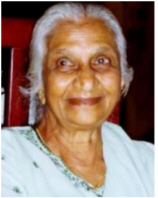 One was Shanta Gaury Pathak, cofounder of the biggest Asianpackaged food company in Britain with the Patak brand name; and the other was Jayaben Desai, inspirational leader of the Grunwick strike who fought relentlessly for respect for Indian immigrant workers from Africa, mostly women. Both died towards the end of 2010 and their obits from UK print media is the source of this article.
One was Shanta Gaury Pathak, cofounder of the biggest Asianpackaged food company in Britain with the Patak brand name; and the other was Jayaben Desai, inspirational leader of the Grunwick strike who fought relentlessly for respect for Indian immigrant workers from Africa, mostly women. Both died towards the end of 2010 and their obits from UK print media is the source of this article.
Shanta Gaury Pathak, the UK’s Curry Queen as the UK media called her, was born in Gujarat, India, moved to Kenya, and later to the UK, after the Kenyan uprising against Indians in the 1950s. She arrived with six children and five British pounds and speaking very little English.
Mortified by the idea of her husband Laxmishanker working as a drain cleaner, she started bottling and packing pickles, spices, and curries at her kitchen table. The recipes were her own, perfected through generations, rooted in her Gujarati cuisine. With her talent for cooking and her husband’s business acumen, they soon started a small shop. When 50,000 Asians arrived in UK after Uganda’s Idi Amin expelled them, her company, Patak’s, bid on a contract to supply food to the refugee camps. Later, as the refugee community settled down, and the Indian curries went mainstream in UK, Patak’s was employing over 500 people in their processing plant. Her bottled spices, curry paste, and pickles dominated the UK and European and the US market. She was the one who named the company Patak — an easier and simpler version of her own family name Pathak. After recovering from near bankruptcies twice because of business decisions, when she sold her company, her brand was worth 105 million British pounds. A devout Hindu and a traditional Gujarati, she was also active in many charitable works.
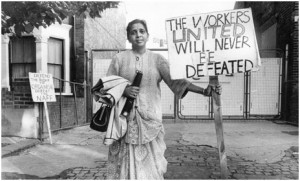 The other was Jayaben Desai. On her death, The Guardian wrote,“…She defied stereotyping all her life.†Also born in Gujarat, she wed Suryakant and settled in Tanzania, where he was a tyre factory manager, used to a comfortable lifestyle. But when they were expelled from Tanzania on its independence, she arrived in the UK, penniless.
The other was Jayaben Desai. On her death, The Guardian wrote,“…She defied stereotyping all her life.†Also born in Gujarat, she wed Suryakant and settled in Tanzania, where he was a tyre factory manager, used to a comfortable lifestyle. But when they were expelled from Tanzania on its independence, she arrived in the UK, penniless.
Her husband worked as an unskilled laborer and she took a job as a seamstress in a sweatshop. Later she went to work for an Anglo-Indian-owned mail-order film processing plant in London. Angry at the low pay and miserable working conditions for a group of immigrant women, she led a walkout of the company in a strike.
The 4’10″ Jayaben remonstrated with her 6’-plus manager, “What you are running is not a factory — it is a zoo. But in a zoo there are many types of animals. Some are monkeys that dance on your fingertips. Others are lions who can bite your head off. We are those lions, Mr. Manager.â€
The strike dragged on and they were arrested on Women’s Support Day and her cause got the nation’s outrage, eventually getting them union recognition. Even though her cause did not win in court, her efforts led to better wages and working conditions for workers. She told the final meeting, “We have shown that workers like us new to these shores will never accept being treated without dignity or respect. We have shown that white workers will support us.â€
Many of us have encountered Shanta Gaury Pathaks and Jayaben Desais in our families and communities. These family matriarchs are proof that feminism is not a foreign import to India. When circumstances demand, they rise to the occasion, despite the burden of tradition and lack of formal schooling, forging new paths for family, community and society.
“Advances in Digital Technology to Change Lifestyle in the Years Aheadâ€
Posted by admin in April 2011 on April 12, 2011
Raghav Khanna, who grew up in Allentown, PA, is a graduate student in EE at University of Pittsburgh. Here he summarizes a recent meeting organized by Triveni International at Carnegie Mellon U.
In a meeting organized by Triveni International Club, a Pittsburgh organization for promoting cultural and social interactions among South Asians, professors working on the different facets of digital technology and engineering education at Carnegie Mellon University shared their insights on the changes ahead in the coming decades.Â
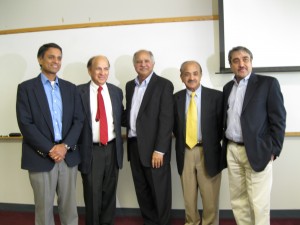
L to R Dr. Ramayya Krishnan, Dr. Juginder Luthra, Dr. Raj Reddy, Dr. Praful Desai, Dr. Pradeep Khosla. Photo by Mr. Vivian Lee of the Computer Science Department.
Prof. Raj Reddy, a member of Triveni, with his illustrious accomplishments on robotics research at the university, summarized the session thus:“The impact of the [IT-driven] technological changes in the next thirty years will be larger than the changes in the last 100 years.â€Â Dr. Reddy is the University Professor in Computer Science and Robotics at CMU.
Â
After Dr. Reddy’s brief welcoming remarks, Prof. Ramayya Krishnan, the Dean of Heinz School of Public Policy and Management, spoke on the interdisciplinary field of human behavior in information technology (IT) environments. The thesis of his research is to address the question, “How does one quantify the probability of being compromised with all kinds of personal information of people now available in the digital world?â€Â Given the proliferation of online social media and networks and the personalization of computers, many bits of of our personal information, including what we buy, where we buy, our reading preferences, and many other details — not to speak of our Social Security #s, Bank Account #s — are in the open. So protecting the privacy and confidentiality of these data is a fertile field for research.
Dr. Pradeep Khosla, the Dean of the College of Engineering, spoke next, informing about CMU’s innovative approaches for furthering engineering education globally. The resources crises around energy and water, he said, will have severe ramifications on generations to come, if scientists do not begin solving the problem now, piece by piece. Dr. Khosla highlighted CMU’s quest as a world-class academic institution to disseminate its influence to the rest of the world by citing the details of CMU’s undergraduate engineering programs in Rwanda and India.
Finally, Dr. Reddy spoke of his major accomplishments, one being the founding of Rajiv Gandhi University in India, an institution dedicated to enrolling exclusively the top-performing students from rural and economically disadvantaged background in Andhra Pradesh, India. All the needs of the students — housing, food, clothes, books and fees – are fully paid. Dr. Reddy also highlighted the challenges in providing a permanent footing to the program. Another of Dr. Reddy’s major achievement is the on-line University Digital Library System with over a million books globally accessible recently implemented .
Dr. Juginder Luthra of Triveni thanked the speakers for sharing with the audience their seminal work, and the audience for their presence on a Sunday morning. CMU provided a very Indian luncheon.
Pitt’s Nrityamala Wins in Competition
Posted by admin in April 2011 on April 12, 2011
By Sushma Kola and Indrani Kar, University of Pittsburgh, PA
As Pitt students and veteran members of Nrityamala (founded 2006), the only student organization in the area dedicated to Indian classical dances, we are pleased that Nrityamala won 1st place at Laasya 2011 competitive event. Each year, we choreograph our own pieces to selected music. This year, the team comprised of nine post-arangetram dancers in Bharatanatyam or Kuchipudi. Shobhitha Ravi, a senior, has been captain of Nrityamala for the past two years.
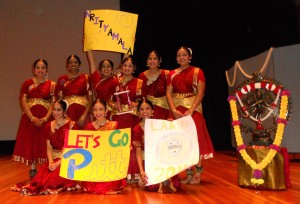
L to R Standing Swarna Sunkara, Santhiya Mahikanthan, Indrani Kar, Shobhitha Ravi, Pranathi Kaki, and Sudha Mokkapati. Sitting Sushma Kola, Shipra Kumar, and Anita Rao.
The team competed at Laasya 2011 hosted by the University of Maryland on February 26th, where they walked away champions. Laasya is the only collegiate Indian classical dance competition on the East Coast, and eight teams are selected to perform following review of their audition video. The winning team gets to host the competition the following year, and Nrityamala is honored and looks forward to welcome teams from across the country to Laasya 2012 in Pittsburgh.
Pitt’s Nrityamala strives to keep the classical tradition alive by consistently performing at cultural shows on campus. This past November, they were thrilled to perform off campus for the first time at Johns Hopkins University for the classical exhibition show Nritya Mala 2010.
After humble beginnings, we have grown into a widely recognized collegiate dance team. We are excited to host Laasya 2012 and invite the Pittsburgh community to be on the lookout for Laasya promotional events. Finally, we would like to thank our respective Gurus from across the nation who have taught us so much not only in dance, but also in dedication and discipline.
Long Live Desi!
Posted by admin in April 2011 on April 12, 2011
Many people have told me in my interactions that they do not quite like me using the term desi to refer to ourselves. None of them mean ill, and with some, I have decades of interactions. I’ve ruminated over this for quite sometime now.Â
The expressions we use in identifying ourselves or any group of people, should be appropriate to the time, place and context of the usage. One example: In a racially charged environment in the US, over time, the term to refer to people of African heritage has morphed from Negroes, Africans, Afro-Americans, Blacks, and now African-Americans.Â
Even in India, Harijan (literally God’s People), the term first used by Mohandas Gandhi for referring to India’s untouchables, has now frowned upon by the very people whom it refers to. Their chosen term now for referring to themselves, and accepted by all others, is Dalit, meaning “the Oppressed.†Incidentally, both Harijan and Dalit are etymologically rooted in Sanskrit.
With the Dalits in India guaranteed constitutional protection and preferences, which translates into raw political power, the term “untouchable†may even re-emerge with an uppercase “Untouchable†with a new nuanced meaning: When nobody in Old India would touch the “untouchable,†in the New India, now nobody will dare to touch the new “Untouchable,†in anycase, the politically well-connected ones.
In formal settings, we refer to ourselves as Indian-Americans, and the US mainstream has adapted this term. The US census Bureau, however, refers to us as Asian-Indians. India’s babus (bureaucrats) have come up with these monstrosities: NRIs (non-Resident Indians), POI (People of Indian origin), and CIOs (Citizens of Indian Origin). Now our ethnic identity is reduced to acronyms.Â
When we are communicating among ourselves on the pulp or over the airwaves, I find nothing offensive or condescending in calling ourselves desis. In fact, the word is just perfect, precise, and succinct. I do not think anybody can come up with a better term.
First, Desi is rooted in Sanskrit. With Desh meaning country, Deshi becomes an adjective and a proper noun for refering to people belonging to a Desh. People of Bangladesh refer to themselves as Bangladeshis. Videshi and Swadeshi are authentic Sanskrit adjectives meaning foreign and indigenous.
And Deshi colloquially morphed into Desi, much the same way Indra morphed into Inder in Northern and Western India. Dharmendra is Dharmeder and I.K.Gujral is Inder Kumar Gujral, and Satya morphing into Sachcha. Pardesi colloquially means a stranger or an outsider.
The term Desi entered the middleclass conversational lexicon in Bombay and New Delhi in the 1950s and 60s when large numbers of people from rural India moved to the cities seeking their livelihood, mostly in low-level, mostly muscular, brawny jobs.
The employer (seth) will be looking for additional hands, and he will tell his people that he needs “good†hands to work in the plant. And the news will percolate down among the workers, and one of them, who the owner likes, will bring his buddy from his gaum (village) to the boss telling him that “Yeh hamara des-se hai,â€Â meaning “He is from my country.â€
The country he refers to is the subregion around Haryana, Punjab, or Western UP; or Marathwada, Konkan, or Telengana. By simply referring to his buddy as his fellow desi, the employee tells his boss in one simple 2-syllable word that he vouches for his buddy’s workmanship, loyalty and skills.
Living ten thousand miles away from India, in the US we at once identify ourselves with other people from different parts of India we see in our neighborhood and workplaces. Our children do the same at school because they as a group see a common set of challenges — both at home and at school — in assimilating into the American mainstream, which they know only they can understand. It is another story that in India and sometimes, even here in these United States, the Tamils, Telugus, Kannadigas; and the Marathis, Gujaratis, Sindhis, Punjabis, Haryanvis; and the Bengalis, Biharis, Oriyas and Assamese cannot stand each other. Â
How do we refer to ourselves when we are talking among ourselves? Indians? That is not esoteric enough, for, every outsider understands the term. Besides, it is the name given by Europeans.  So, no. Besides, a large number of us carry US passports. Many are green card holders, with one foot here and one foot in India, calling themselves Ghat-ka-kutta in their moments of confusion.
PIOs or People of Indian-origin? NRIs or Non-Resident Indians? or CIO, or Citizens of Indian Origin? These are long and clumsy bureaucratese.
In this context, Desi is just perfect, succinct, and rooted in India etymologically. And in the geographical context, it is expansive and inclusive, and includes Pakistanis, Bangladeshsis, Nepalese, and Sri Lankans as well. So, Desi, Amar Raho! or Long Live Desi.
 Of course, the anglicized middleclass brown sahebs in India, being mental slaves of the British, will wait for the Oxford Dictionary to accept it into the English vocabulary before using the term themselves.
Spelling Bees: A Script Chauvinist’s Musings
Posted by admin in April 2011 on April 12, 2011
Â
Spelling Bees: A Script Chauvinist’s Musings
By Deepak Kotwal, Squirrel Hill, PA
The 2011 Spelling Bee is coming up in June. You have no doubt read last year, with some pride, that an Indian-American child won the Spelling Bee for the third year in a row, and also in eight out of the last twelve annual finals. Many of the mainstream publications marveled at this feat since Indian-Americans constitute less than 1% of US population. The children’s parents, who grew up in India, had no idea what a spelling bee was while they were growing up!
After all, if your mother tongue is any Indian language, there is no need for a spelling bee. It all has to do with the well thought-out and sci-entific nature the Devanagari script (देवनागरी लऱपि). The Latin script used for the English language is a simplistic Phoneme script in which each symbol represents a consonant or a vowel. There are only 26 of the-se. The rules of pronunciation are not uniform; For example, ‘book’ (बà¥à¤•à¥) has a short ‘u’ sound, whereas ‘boot’ (बूट) has a long ‘u’ sound.
The ancient rishis of India took a scientific approach while designing the Sanskrit alphabets, which is an Abugida system, in which consonants and vowels are combined together to represent a sound. They came up with 38 consonants and 14 vowels, which, when combine, represent 532 different sounds. The consonants were also grouped according to the part of the mouth used to vocalize these, as in pa, pha, ba, bha, ma, or ि फ ब ठम, which are ‘labial’ sounds or ओषà¥à¤ à¥à¤¯. Then there are dental, palatal and guttural etc. sounds.
Anyone who learnt to read and write any Indian language first, and, started learning English later, knows how hard and illogical English is. I consider myself very lucky that I did not learn English as my first lan-guage. Many of the first generation Indian-Americans studied only in an English medium school in India, as that was deemed to be the ticket to a better economic future.
Realizing the limitations of the Roman script, early Western scholars developed and adopted a standard method of using Latin letters with dia-critical marks to write Sanskrit and Devanagari (Ref: IAST ISO 15919 adopted in 1894 in Geneva at the International Congress of Orientalists
Have you noticed that although all Bollywood movies are in Hindi, the posters are invariably in English? Is this an expression of Indians’ slavish attitude towards all things English? Has Thomas Ba-bington Macaulay1 been thoroughly vindicated? Look for an article on Macaulay in the next issue.
Or, have the masses of India suddenly become literate in English?
The French colonialists forced Vietnam to abandon its native script. Thailand, on the other hand, which has never been colonized, proudly retains its own script today. Independent India appears to be abandoning its own scripts without any outside pressure! In my humble opinion, if Indian-American parents take the trouble of teaching their children to speak, read and write an Indian language and the Devanagari (or any other Indian) script, these children’s intellectual horizons and vision will be greatly expanded.
GOP Rising Stars Marco Rubio & Nikki Haley: Images From Two Contrasting Profiles
Posted by admin in January 2011 on December 24, 2010
By Kollengode S. Venkataraman e-mail:Â thepatrika@aol.com
In the 2010 elections rightwing mouth pieces (Fox, Rush Limbaugh, Sean Hannity and others) enthusiastically endorsed two “ethnic†candidates, Marco Rubio in Florida and Nikki Haley in South Carolina. Rubio, the speaker of the Florida Assembly, set his sights as the US senator; Nikki Haley, a member of South Carolina state assembly, pursued the governorship in South Carolina. Both were the darlings of the rightwing Tea Partiers. Finally, the GOP seems to recognize the changed social fabric of the US. Better late than never.
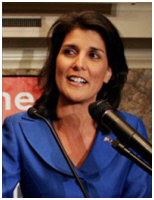 Haley, born to Sikh immigrant parents from India, was Namrata Nikki Randhawa. After her marriage and after entering electoral politics, she dropped the very Indian “Namrata†and “Randhawa†in her name and became Nikki Haley.
Haley, born to Sikh immigrant parents from India, was Namrata Nikki Randhawa. After her marriage and after entering electoral politics, she dropped the very Indian “Namrata†and “Randhawa†in her name and became Nikki Haley.
Rubio and Haley ran disciplined campaigns, and thanks to the anti-Democratic sentiment, they won big. They deserve our admiration.
Even as both represented the minorities in American electoral politics, their journeys were sharply different. Rubio is the son of Cuban exiles and was born in Miami, Florida and is fluent in Spanish. He grew up in what can be called a working class American home — his father was a bartender and his mother worked as a hotel housekeeper in Las Vegas, Nevada. After  attending Santa Fe Community College, he earned degrees in political science 1993 and law degree 1996 from universities in Florida. Rubio served as a City Commissioner for West Miami before elected to the Florida House of Representatives in 2000. In November 2006, he became the Speaker of the Florida State House for 2006-08.
attending Santa Fe Community College, he earned degrees in political science 1993 and law degree 1996 from universities in Florida. Rubio served as a City Commissioner for West Miami before elected to the Florida House of Representatives in 2000. In November 2006, he became the Speaker of the Florida State House for 2006-08.
Haley, though a minority in the ethnic sense, belongs to a “privileged†minority in the American context. She is like many children born to professional Indian immigrants. Born to college educated Indian parents – her father was a professor in chemistry — Haley went to Clemson University, earned a degree in accounting, and worked as an accounting supervisor in Charlotte, NC. Her mother was an entrepreneur. According to her campaign, Haley worked in her mother’s garment business and built it into a multimillion dollar enterprise. She was active in many business and social organizations such as chambers of commerce, Rotary Club…
The victory speeches the two delivered and the campaign they ran sharply brought out the contrasts in their journeys to where they got. Remember, political campaigns and rallies are heavily scripted and stick to well-tested talking points. Campaign managers spend lot of time and effort to manage the “optics†of the event captured on video cameras.  Below are the video clips of the victory speeches of Rubio and Haley in full. (Note: if you want to watch their victory speeches, copy the web address and paste it at your URL site and hit return.)
1. Haley’s Speech here: www.youtube.com/watch?v=qBrO7VmB5fM
2.  Rubio’s Speech here: www2.counton2.com/news/2010/nov/03/governor-elect-nikki-haleys-victory-speech-ar-1045771/
Rubio, proud of his status as the son of Cuban exiles, made passionate references to his father and mother in his victory speech. He reaffirmed his identity, as the one belonging to “the community of exiles,†and that, he, Marco Rubio, always will be the son of [Cuban] exiles.†He also talked about his bartender father and housemaid mother.
In Haley’s bland victory speech, there was no reference to her roots, only passing references to her parents as she thanked her and her husband’s parents and brothers.
Earlier in the campaign, Haley told “I was born and raised with the Sikh faith, my husband and I were married in the Methodist Church, our children… … have been baptized in the Methodist Church, and currently we attend both,†she said. But soon, she was running away from her Sikh identity when she did not even acknowledge that she and her husband, Michael Haley, were married in two ceremonies, one Sikh and the other at a Methodist church.
Earlier in her political life, Haley was comfortable publicly embracing both religions. But as the campaign progressed, she talked of having “converted to Christianity†before her wedding in 1996, when she was baptized as a Methodist. To a question “Is Nikki a Christian?†in her website, she also changed the wording in the answer: From an answer that references to “Almighty Godâ€, she changed it to one that references “Christ.â€
The contrast between Rubio and Haley is striking. As both climbed higher on the political ladder, Rubio was quite comfortable about his roots. Haley, uncomfortable with her ethnic identity, was running away from her roots. Haley is not unique in this. Bobby Jindal (Piyush, 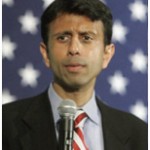 before he became Bobby) set the trend when he ran for the office of the governor of Louisiana. When Jindal as governor was invited to the White House Diwali function — which has now lost all its religious significance — he did not show up. Probably because of the bad optics of video clips filling the Louisiana airwaves in election commercials showing a very brown Jindal in a Indian “Hindu†function in the midst of other brown Indians. That will not sit well in the deeply “Southern†Louisiana.
before he became Bobby) set the trend when he ran for the office of the governor of Louisiana. When Jindal as governor was invited to the White House Diwali function — which has now lost all its religious significance — he did not show up. Probably because of the bad optics of video clips filling the Louisiana airwaves in election commercials showing a very brown Jindal in a Indian “Hindu†function in the midst of other brown Indians. That will not sit well in the deeply “Southern†Louisiana.
In the electoral politics for state-wide offices in the US, multiculturalism and diversity is still a novelty.
In Jindal’s defence, Jindal, a Brown University graduate in biology, in his anxiety to get elected as the governor of Louisiana, was also running away from Darwin’s Natural Selection and embraced the Judeo-Christian concepts of creation in which the universe is only 6,000 years old, give or take a few centuries. OK, All is fair in war, love, and in elections.
Jindal and Haley running away from their roots reminded me of David Chappelle’s wickedly witty, cynical skit (video reference: www.youtube.com/watch?v=wITchV88Gjk&feature=related ) (Note: copy the web address and paste it at your URL site and hit return to go to the YouTube clip. This is wicked and hilarious.)
In the skit, a congenitally blind Black man, raised by racist whites since his childhood, behaves more White than the whites themselves. He hates Blacks more than the Whites themselves.
The discomfort of elected officials of Indian origin in the US such as Nikki Haley and Bobby Jindal with their own cultural identity is baffling. The track record of nearly three million Indian-Americans is nothing to be embarrassed about. They establish themselves on their individual strengths alone as small business people, healthcare professionals, engineers, IT professionals, lawyers, researchers, depending only on their education and professional skills. And yes, also as cab drivers, hotel employees, restaurant workers, and airport employees pushing wheelchairs carrying physically disabled passengers, with their sweat equities.   ♦
The Iraq War in the Indian-Immigrant Context Seen Through a Play
Posted by admin in January 2011 on December 24, 2010
By Nina Ahuja, Pittsburgh, PA
Editor’s Note: Nina Ahuja, is a physician at UPMC in Pittsburgh. She grew up in Fox Chapel, and went to George Washington University before earning her medical degree from George Washington University.
RON is a play about the patriotism and loyalty of an Indian immigrant family and their US-born son who feels compelled to serve his country by fighting in Iraq and Afghanistan. The play is set in the backdrop of the current American war in Iraq and Afghanistan. Ron (Ronobir Mitra), the only son of an Indian immigrant family, is a member of the US National Guard, deployed in Iraq. Although Ron’s parents were not happy with his decision to join the army, they respect his sense of duty to his country and allow him to serve.
The play shows how the family of Ron, his parents Animesh and Shanti Mitra go on with their life in the US while Ron is in the battlefield. His absence and concern over his well-being are issues his parents, extended family, and close friend Bidisha share and express in the play.
RON, created by Natya Bharati in Washington DC, was staged at the S.V. Temple on October 23, 2010 under the auspices of the Triveni International Club.
The storyline of the play begins on the morning of a baby shower for Bidisha, Ron’s childhood friend. Ron’s parents host the baby shower on his behalf. As the guests arrive, the hope and excitement of a new life is shared among all of Ron’s family members and friends and they all hold hope that Ron will call during the baby shower.
During the baby shower, the evening takes an unexpected turn when Surojit Biswas, a writer and journalist from Calcutta challenges Animesh and other guests about their loyalty and beliefs, and their fundamental moral values. The party rapidly changes from one filled with hope and excitement to a deep revelation of each individual’s inner wars and the internal battles that each has been fighting. The baby shower takes the final twist when news from Iraq reaches conveying Ron’s death.
The play nicely portrays the inner war that each individual faces for physical and emotional survival by focusing on the larger issue of the political climate and the journey of the son of an Indian immigrant family into war. The central message emanating from RON is that though the wars we fight are not always just and fair, we still fight them anyway.
The battles of identity, belonging, duty, personal loss, and happiness, are all explored through the characters at the baby shower. Surojit Biswas, played by Paul Singh, was fabulous at probing his fellow friends to address these issues and reveal their inner struggles as he drank himself into a verbal outpouring revealing his emotional struggle. Animesh and Shanti Mitra (played by Manoj Tiwari and Meera Narasimhan) did an exceptional job as Ron’s parents. Their portrayal of the conflict parents feel between what they think is right for their children versus allowing their children to pursue their own interest was realistic, and one that many parents in the audience identified with. The glimpses of Ron, played by Gopi Ganji, were both poignant and challenging.
The younger generation who came to the program came away feeling quite in awe of their ability to identify with the messages of patriotism, free will, and love of family portrayed in this play. Many in the audience who were mostly immigrant parents could also identify with the portrayals of the inner battles they have all been through.
After their three-hour performance, Natya Bharati’s artists stayed to answer questions from the audience and personally interact with them before their trip back to DC that very same night.
Dr. Juginder and Dolly Luthra of the Triveni International Club, with help from all the board members of Triveni hosted and emceed the program. Amit Grover, the Triveni Club Secretary, sold extra tickets to the show at the door.
RON is written by playwright, Sudipta Bhawmik and directed by Suma Muralidhar. Bhawmik is a well-known actor, director and playwright in the DC area.
Suma Muralidhar, a veteran actor in DC area, made her directorial debut with RON. Mamta Kukreti was in charge of the production with help from Rakesh Tandon, Suma Muralidhar, Guneet Kaur, Neeru Tandon, Siddhesh Pai-Raikar, Madhuri Subramaniam, Hari Easwaran, Yatin and Chetna Gola.
For all the efforts that went to bring the program to Pittsburgh, the turnout could have been better. The auditorium was only half full
O Henry’s Chairs
Posted by admin in January 2011 on December 24, 2010
Mandira Chattopadhyay, DuBois, PA
e-mail: mchattopadhy@bsu.edu
If you are a keen observer walking past O Henry’s house, you could not but help notice the glow of happiness it casts over the busy streets of downtown Austin; you could not help but look up at this little house and dream about O Henry, known as William Sydney Porter, living with his beloved wife.
Most readers know Porter under the pen name “O. Henry.â€Â  His reputation as a master of short stories remains even after a century and a half. Growing up in Greensboro, North Carolina in 1862, Porter held a number of jobs from drug store clerk to cartoonist. He relocated to Texas in 1882 and got by as a ranch hand, a bank teller and a journalist. During the last decade of his life Porter created hundreds of short stories that comprise his legacy. His stories are known for their surprise endings. They are set in the various regions where he lived from New York and Texas to Latin America, and hold a mixture of humor and pathos. A few are considered classics of the genre.
“The Gift of the Magi,†for example, tells of a husband and wife, who sell their most prized possessions in order to buy presents for each other. His focus on entertainment can sometimes make the stories feel contrived, and the pressures of publication sometimes show in his work. It is widely believed that Porter produced “The Gift of the Magi†in just a few hours.
I was simply fascinated when I came across O Henry’s tiny little house tucked away between towering modern structures in downtown Austin.  I initially heard of O Henry’s house from the bus driver of the tourist bus as I toured Austin. He noted the contrast of the simple home from the pomp and grandeur of contemporary downtown Austin of Dell and IBM. As I returned to my hotel from the tour, an impulse pushed me toward the house, because I wanted to see to it with my own eyes. .
On my walk there I passed the fancy restaurants and open cafes that line the block. Suddenly amidst the glass boxes and modern facades, I spied a lovely Queen Anne house lost amongst the modern downtown. I heard the house had been moved already once where now sits a big hotel. The house was only a few years old when the Porters rented it in 1893, when it sat on 308 East Fourth St., a few blocks from its present location. Kerosene lamps only lighted it since it was still without gas or electricity. It was a rental in 1930 when it was going to be torn down to make way for other warehouses that had taken over that part of the city. The owner of the house was persuaded to save it, and it was moved to one of Austin’s original parks and deeded to the city. In 1934 it was restored and opened as a museum with some of Porter’s furniture. In 1994-95, further restoration repaired the exterior, the roof, and the front porch, along with four brick chimneys.
Entering the house, I felt the solemn but sweet organ notes that O Henry played were still in the air. As I came in I noticed the photographs of his wife and family on the mantle. The narrow hallway in the house displayed the Rolling Stone, the paper he published in Austin, and some of his books.
I flipped through one of his books and turned to his own account of his marriage. O Henry implored the Dear Fairy to make their wedding night longer: “Just an hour, dear fairy, so we can remember how the grass and the poplar trees looked and the bow of those bonnet strings tied beneath the chin [of Mrs. Porter] . . .†Out the window, I could see one of the city’s many horse-drawn carriages pass. I thought of the happy couple eloping one moonlit night in a borrowed carriage, joking with each other, laughing in spite of her parent’s objections to the match and dreaming of their bright future, which they never expected to be clouded so soon.
In the back of the house I saw a little kitchen with some of the utensils he used. The furniture was chipped and bruised. Each plank in the floor shrieked O Henry’s presence. It seemed incredible that I was able to walk in his room. A cold musty smell came out of the rotten woodwork of the house, but the rich odor of the sweet relationship with his wife still lingered there. As I traversed the room, I still could discern the love and the outstretched arm of his beloved wife. That spirit seemed to hover there.  Their love reminded me of the grand love of Shah Jahan and Mumtaz Mahal as declared in Taj Mahal.  ♦
Diwali at the White House
Posted by admin in January 2011 on December 24, 2010
By Narasimmam Srinivasagam, Upper St. Clair, PA.
Editor’s Note:Â Dr. Srinivasagam is a long-time resident here, having arrived in Pittsburgh in 1965. He ha been working in the Jefferson and Braddock hospitals. He lives in Upper St. Clair with his wife Nancy. Here he recounts the Diwali gala at the White House.
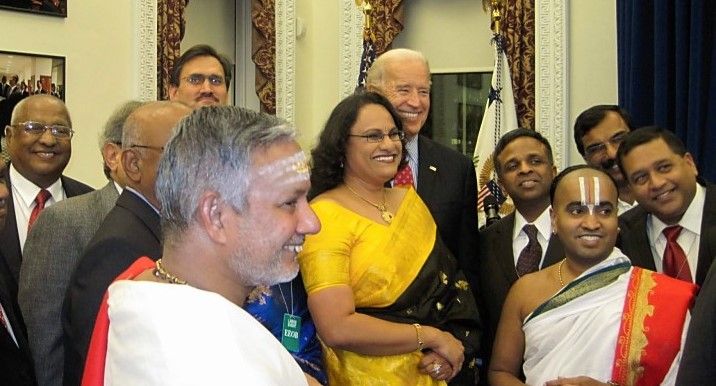
N. Srinivasagam (extreme left) at the Diwali function at the White House with Vice President Joe Biden
On November 5th I received an invitation from my daughter who has recently been appointed to a position at the White House. The invitation was for a reception for the Indian community to celebrate Diwali on November 9th hosted by Vice-President Joe Biden as President Obama was on a state visit to Asia. With much excitement I attended the function along with about 150 fellow Indians from the Washington D.C. area. Some of the guests were from the Sri Shiva Vishnu Temple in DC, whose chairman, Leila Mandava was also present. As a member of the S.V. Temple, I received a warm welcome from everyone gathered.
Vice President Biden welcomed everybody and then the festivities began. The priest form the Sri Shiva Vishnu temple performed the Diwali puja, with Vice President lighting the decorative lamps. A brief, but gracious Bharatanatyam recital followed. Vice President Biden then spoke about the vibrant Indian community across the country and how happy and honored he was to be part of the festivities. After the ceremony, Indian snacks were served and I mingled with other invitees. I had an opportunity to briefly talk to the Vice President and a member of Congress present.
This was an unforgettable experience as an Indian and an American to celebrate this holy holiday at the White House. I was awestruck by grandeur of the place and the magnitude of the event, and was thankful that President Obama and Vice President Biden recognize, as Presidents Bush and Clinton did, the importance of good Indian-American relationship. It was an amazing evening, God Bless America!   ♦

